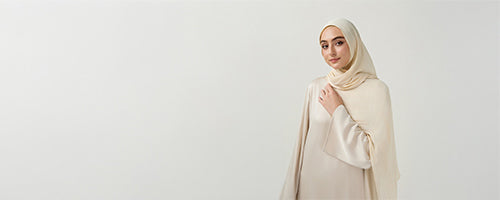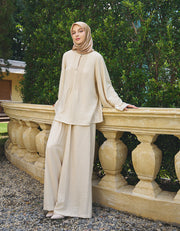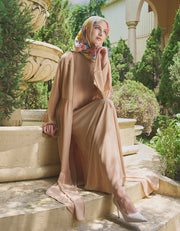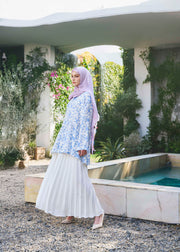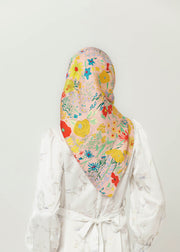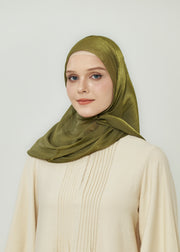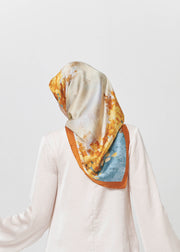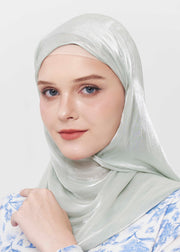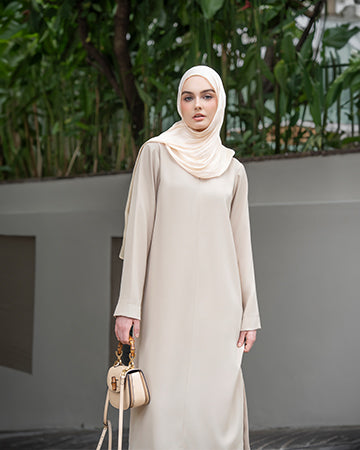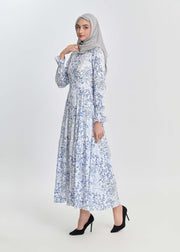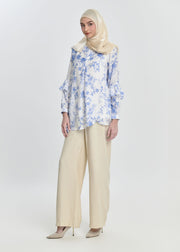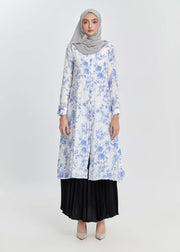From Past to Present: The Evolution of Traditional Islamic Fashion
The evolution of Islamic fashion tells a powerful story of culture, identity, and adaptability. Rooted in values of modesty and faith, traditional Islamic dress has evolved across centuries and continents—shaped by religious beliefs, political climates, and global fashion trends.
From flowing abayas to contemporary modest wear, this journey reflects how Muslim communities around the world have honored their heritage while embracing change.
Early Roots: The Origins of Traditional Islamic Clothing
The earliest forms of Islamic clothing emerged in the 7th century, following the birth of Islam. Modesty (haya) became a central value in Muslim dress, but the interpretation of modest clothing differed depending on geography, climate, and cultural norms.
In early Islamic societies, women commonly wore:
-
Loose-fitting robes and veils to cover their hair and body
-
Headscarves and shawls made of simple, breathable fabrics
-
Dark colors like black and navy for discretion
Rather than being a uniform dress code, traditional Islamic fashion was deeply influenced by local customs and regional fabrics. For example, Bedouin women wore face coverings and layered robes to protect against the desert sun, while urban women in cities like Baghdad or Damascus favored lighter layers and silk textiles.
Cultural Diversity and Regional Expressions
The evolution of Islamic fashion becomes even more fascinating when viewed through the lens of regional diversity:
-
In South Asia, Muslim women adopted the shalwar kameez with a dupatta, combining modesty with vibrant colors and embroidery.
-
In North and West Africa, the kaftan and boubou represented both tradition and status, often adorned with bold patterns.
-
In the Arabian Gulf, the abaya and niqab became iconic symbols of identity, often worn in black with gold or silver detailing.
-
In Southeast Asia, especially Indonesia and Malaysia, traditional Islamic wear blended modesty with batik prints and pastel tones.
This rich variety reflects how Islamic values were integrated into pre-existing clothing traditions, rather than replacing them entirely.
Modernization and the Global Influence on Islamic Dress
In the 20th century, waves of modernization, colonial influence, and global travel began reshaping how Muslims dressed. Women’s roles in public spaces changed, and so did their wardrobe:
-
New fabrics like jersey, crepe, and lycra allowed for more flexibility and comfort
-
Tailored jilbabs and structured tunics became popular in cities and workplaces
-
The hijab became more visible as a political and personal statement of faith, particularly during times of sociopolitical change
The evolution of Islamic fashion during this period was marked by negotiation between modernity and modesty. While some communities resisted Western influences, others adopted them creatively—introducing fitted sleeves, hidden zippers, and modern cuts while maintaining full coverage.
The Rise of Modest Fashion as a Global Movement
In the last two decades, the evolution of Islamic fashion has entered the mainstream fashion industry. What was once considered niche has now become a recognized and respected segment of global style:
-
Major fashion weeks (like London and Istanbul) have dedicated platforms for modest fashion designers
-
International brands and online boutiques now offer hijab-friendly collections and inclusive sizing
-
Influencers and bloggers from across the Muslim world have redefined how Islamic fashion is perceived—blending tradition with modern trends
From streetwear-inspired abayas to minimalist jilbabs, modest fashion has grown into a space where faith, culture, and personal style coexist.
Digital Platforms and the Democratization of Modest Style
With the rise of e-commerce and social media, modest fashion has become more accessible and customizable than ever before:
-
Online stores offer global shipping for niche Islamic fashion styles
-
Instagram, TikTok, and Pinterest are filled with hijab tutorials, outfit inspiration, and styling guides
-
Muslim women can now express their individuality while staying true to their beliefs
The digital space has allowed for cross-cultural exchange, making it easier for women in Canada to wear Indonesian tunics or for those in Dubai to try Moroccan kaftans.
The Future of Islamic Fashion: Tradition Meets Innovation
Looking ahead, the evolution of Islamic fashion is expected to move toward even more innovation, sustainability, and inclusivity:
-
Designers are exploring eco-friendly fabrics and ethical production models
-
Inclusive campaigns celebrate diversity in body shapes, ethnic backgrounds, and personal stories
-
Tech-integrated designs (like cooling fabrics for summer hijabs or wrinkle-free abayas) are gaining traction
Most importantly, the future of Islamic fashion lies in choice—giving Muslim women the freedom to define what modesty means to them.
Conclusion: Honoring the Past While Embracing the Present
The evolution of Islamic fashion is not simply about what Muslim women wear—it's about how they express their values, navigate modern life, and celebrate their heritage. From ancient robes to contemporary abayas, from the bustling streets of Cairo to fashion runways in Paris, traditional Islamic clothing continues to evolve with grace and purpose.
If you’re looking to embrace this evolution in your own wardrobe, discover timeless yet contemporary pieces at Minnaba—where tradition meets modern elegance in every stitch.
Honoring the Past While Embracing the Present

